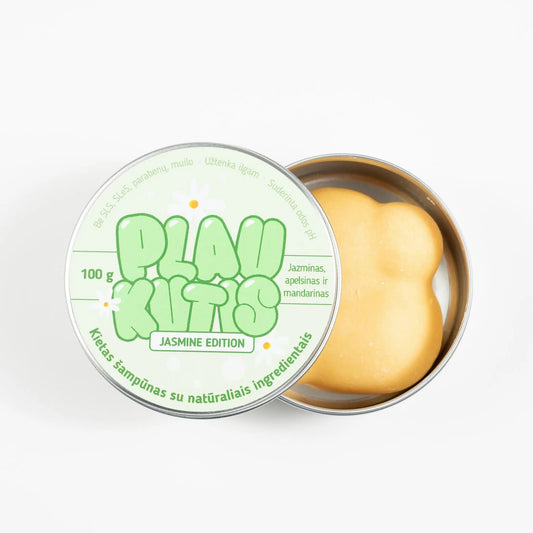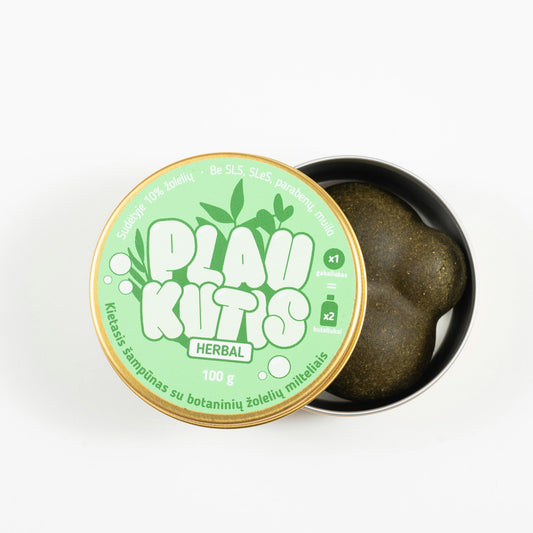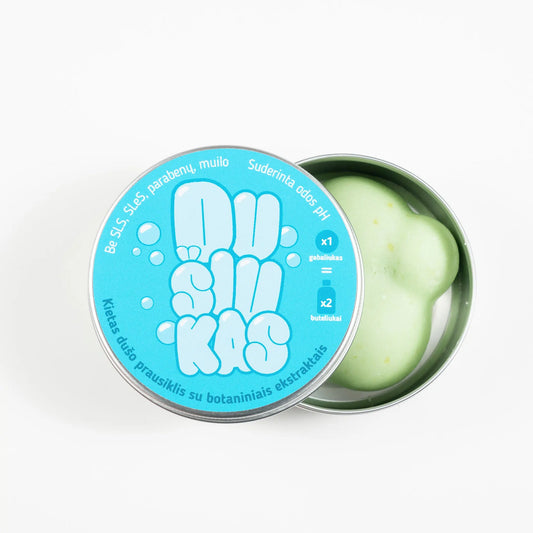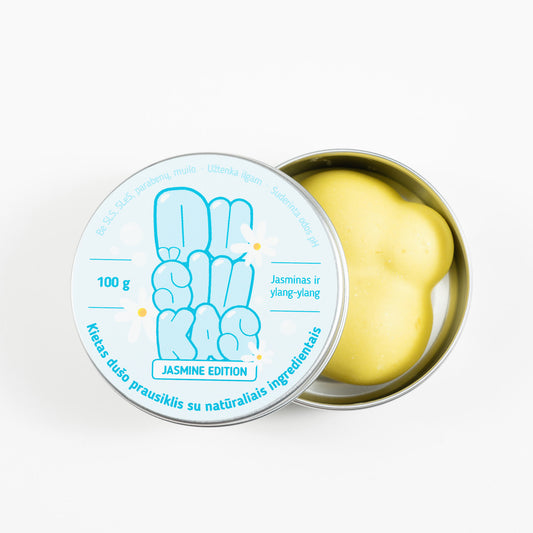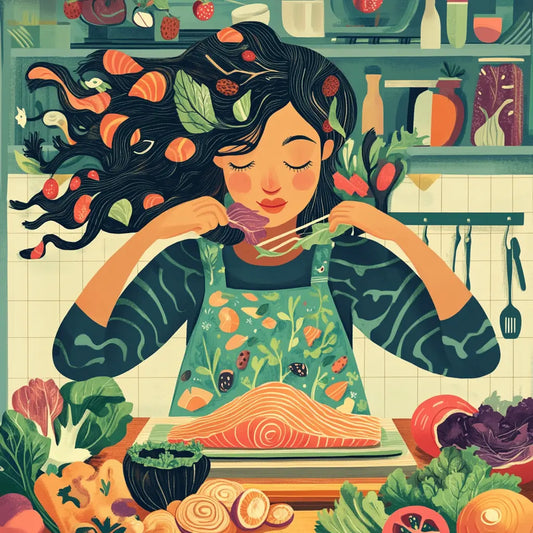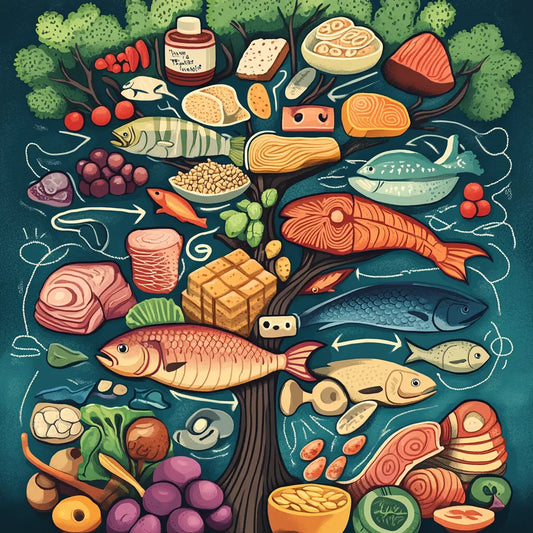In recent years, more and more people have been abandoning chemical products and returning to natural, time-tested methods for hair care. These traditional practices, which stem from ancient wisdom, are becoming popular again due to their effectiveness, sustainability and simplicity. Ingredients such as rice water, clays and natural oils are now taking an important place in modern beauty treatments.

This interest in traditional remedies is part of a broader “clean beauty” movement that emphasizes non-toxic, organic, and natural ingredients. Women around the world are embracing these practices, combining ancient techniques with modern needs. In this article, we’ll discuss the resurgence of traditional hair care and how these ancient practices have become an important part of modern routines, based on scientific research and interesting facts.
Rice water washing rise
Rice water has been an important part of hair care rituals for centuries, especially in Asia. The Yao women of Huangluo, China, are famous for their incredibly long and healthy hair, which they maintain by bathing in rice water. Historical sources indicate that this practice has been used for over 1,000 years in various cultures, and today it is being rediscovered for its incredible benefits.

The history of rice water in hair care
During the Heian period in Japan (794–1185 CE), noble women were known for their long hair, called suberakashi , which reached the floor. These women would soak their hair in fermented rice water, which was believed to strengthen and beautify it. Similarly, in China, Yao women, known as "the longest haired women in the world," regularly use rice water as a hair tonic. Their hair can grow up to 6 feet (1.8 m) long , and it remains dark and shiny even into old age, which is attributed to the use of rice water. Studies show that 60% of Yao women retain their black hair into their eighties, a rate much higher than the global average of graying.
Promoting hair growth using rice water recipes
Rice water is being rediscovered as a hair treatment in the modern world due to its simple preparation technique. Here's a simple method:
- Wash one cup of uncooked rice to remove any dirt.
- Add two cups of water and let the rice soak for 30 minutes.
- Pour off the water and collect it.
- To enhance the effects, let the rice water ferment for 24-48 hours. Fermentation increases the nutrient content and helps your hair even more.
- After shampooing, pour rice water over your hair, leave for 10-20 minutes, and rinse well.

Scientific research on the benefits of rice water
Rice water is rich in inositol , a carbohydrate that can repair damaged hair. Research published in the Journal of Cosmetic Science shows that inositol penetrates deep into the hair structure and remains there even after washing, providing long-lasting protection. Inositol reduces surface friction by 22% and improves hair elasticity by 16% , making hair more resistant to breakage.
Rice water is also rich in vitamins B and E , which nourish hair and promote hair growth. Studies conducted at the National Center for Biotechnology Information (NCBI) have shown that rice water improves hair texture, increases moisture retention, and reduces hair loss by 18% after six months of regular use.
Clay washes and their origins around the world
Clay has been used for centuries by various cultures for its cleansing and detoxifying properties. It is a natural way to cleanse the scalp and hair without stripping them of essential oils. African and North American cultures have long relied on clays such as bentonite and ghassoul for their health benefits.

Using Bentonite Clay in Hair Care
Bentonite clay has been an important part of African and Native American beauty routines for centuries. This clay, derived from volcanic ash, is known for its ability to absorb impurities and detoxify the skin and scalp. In Morocco, ghassoul (or rhassoul) clay has been used for over 1,400 years . It is rich in magnesium, silicon, and calcium, making it an excellent scalp conditioner and hair conditioner.
Among Native American tribes, bentonite clay is often mixed with water to create scalp masks that help regulate sebum production and remove product residue. Recent studies have confirmed that bentonite clay can absorb 30 times its weight in toxins , making it highly effective for cleansing the scalp and hair.
Modern clay washes for detoxification and hair cleansing
Clay washes are becoming increasingly popular today due to their ability to detoxify the scalp and cleanse the hair in a natural way. Unlike commercial shampoos, which may contain chemicals, clay washes remove excess oil and residue while maintaining the scalp's natural pH balance. They are especially beneficial for people with oily scalps, dandruff, or sensitive skin.

Here's a simple DIY clay wash recipe:
- Mix 2 tablespoons of bentonite clay with enough water or apple cider vinegar to form a smooth mixture.
- Apply the mixture to your hair and scalp, making sure to cover the entire area.
- Leave on for 5-10 minutes, then rinse well with warm water.
How clay washes solve common hair problems
- Oily scalp : Bentonite clay absorbs excess oil, leaving the scalp clean without drying out the hair.
- Dandruff : Its antifungal properties help reduce dandruff by reducing the amount of yeast and fungus on the scalp. A 2016 study found that bentonite clay reduced dandruff symptoms in 87% of users after four weeks.
- Product Residue : Clay acts as a detoxifying agent, removing excess residue left over from styling products and hard water.
For those looking for a deeper cleanse, bentonite clay is a great solution. It gently but effectively cleanses hair and can greatly improve hair texture and scalp health with regular use.
The popularity of oil washing methods
Oil pulling is another traditional practice that has long been used to nourish and cleanse the scalp and hair. Cultures from India to the Mediterranean have relied on oils like coconut, olive, and argan to promote healthy hair growth and prevent damage.
Traditional oil-washing methods in Indian and Mediterranean cultures
Indian Ayurvedic hair care practices have included oil pulling for thousands of years. Oils such as coconut , amla , and bhringraj are applied to the scalp to moisturize, strengthen, and promote hair growth. Studies published in the International Journal of Trichology show that regular use of oils reduces hair loss by up to 36% and increases hair strength by 30% . Pre-oiling also helps protect the hair structure from water penetration during washing, which can cause frizz and breakage.

Similarly, Mediterranean cultures have long used olive oil for hair care. Olive oil is rich in oleic acid , which moisturizes and strengthens hair while reducing frizz. Women in Greece and Italy traditionally applied olive oil as a pre-wash, which was believed to protect hair from environmental damage. A 2019 study found that olive oil improved hair softness and reduced split ends by 40% after regular use.
The rise of pre-oil wash treatments
In recent years, pre-oiling methods have become increasingly popular in modern hair care. Oils such as argan , coconut , and castor are now used to protect hair from the damage caused by shampoos. Coconut oil is particularly effective due to its ability to penetrate deep into the hair structure. Research published in the Journal of Cosmetic Science has shown that coconut oil reduces hair protein loss by up to 70% , making it ideal for dry or damaged hair.
Argan oil, also known as "liquid gold," is rich in fatty acids and antioxidants that protect hair from oxidative stress. Studies show that argan oil can increase hair elasticity by 19% and reduce breakage.
Why oil washing is ideal for scalp health
Oil washing is beneficial for all hair types, but it's especially beneficial for dry scalps and damaged hair. Here's why:
- Improved blood circulation : Massaging the scalp with oils improves blood flow to the hair follicles, promoting hair growth.
- Moisturizing : Oils moisturize the scalp, reducing dryness and dandruff.
- Strengthening : Oils help protect the hair structure, reducing hair breakage and split ends.
For a DIY oil wash, warm 2 tablespoons of your favorite oil (like coconut or olive) and massage into your scalp and hair. Leave on for at least 30 minutes before rinsing for best results.
Integrating traditional cleansing methods into modern hair care brands
As interest in “clean beauty” grows, many hair care brands are beginning to incorporate traditional methods and ingredients into their products. They combine ancient knowledge with modern technology to create effective, natural solutions for maintaining hair health.

How major hair care brands are embracing traditional methods
Many major hair care brands have created products that reflect the growing demand for traditional cleansing methods. For example:
- SheaMoisture incorporates African black soap and oils into its shampoos, drawing on African traditions of natural hair care.
- Briogeo offers a charcoal and coconut oil scalp scrub , inspired by detoxifying and oiling rituals from African and Ayurvedic traditions.
- OGX offers a line that combines argan oil and clay shampoos , merging Moroccan and Native American hair care practices with modern formulas.
Examples of modern products based on cultural hair rituals
- Ayurvedic-inspired shampoos : Many brands use Ayurvedic ingredients, such as neem , amla , and shikakai , to promote healthy hair growth and naturally cleanse the scalp.
- Clay-based cleansers : Products enriched with bentonite and ghassoul clays are becoming increasingly popular due to their ability to detoxify the scalp and add volume to hair.
- Rice water-enriched products : Some brands have started incorporating rice water into shampoos and conditioners, touting its benefits for hair strength and shine.
These products allow consumers to experience the best of traditional and modern hair care.
Myth busting: 5 unexpected facts about traditional hair care
- Myth: Oils make hair greasy
Fact: When used properly, oils nourish and moisturize the scalp without making your hair greasy. It’s important to choose the right amount and the right oil for your hair type. For example, light oils like argan or jojoba are great for fine hair, while heavier oils like coconut are best for thick or curly hair. - Myth: Clay dries out hair
Fact: When used correctly, clay doesn't dry out your hair. In fact, it helps balance sebum production and detoxify your scalp. When mixed with water or apple cider vinegar, clay leaves your hair clean and healthy. - Myth: Rice water is only for hair growth
Fact: While rice water is known for promoting hair growth, it also improves hair elasticity, shine, and strength. It reduces friction, which helps prevent hair breakage and damage. - Myth: Oil-based treatments are only good for dry hair
Fact: Oil-based treatments are beneficial for all hair types. Even people with oily hair can benefit from oil therapies because they help balance natural sebum production. - Myth: Traditional hair care methods are outdated
Fact: Many traditional methods are scientifically proven. Ingredients like rice water, clay, and oils have proven benefits for hair health and are relevant in modern routines.

Practical tips for incorporating traditional methods into your routine
- Start small : Try one traditional remedy and see how your hair responds. For example, start with a weekly rice water wash or a monthly clay cleanse.
- Be consistent : These methods often take time to show results. Regular use (once a week or every two weeks) will help you achieve maximum benefits.
- Combine the old and the new : Combine traditional treatments with modern products. For example, use a commercial shampoo but supplement it with a rice water wash or DIY oil therapy.
- Listen to your hair : Observe how your hair responds and adjust treatment frequency as needed.
- Avoid Overdosing : While these methods are natural, using them too frequently can cause hair to become weighed down or scalp irritation. Balance your routine to maintain healthy hair.
Frequently asked questions about modern traditional hair care
Q: Is rice water safe for colored hair?
A: Yes, rice water is safe for colored hair. It helps strengthen and nourish hair, which can be especially beneficial for colored or chemically treated hair.
Q: How often should I use clay wash?
A: For oilier hair or scalp issues, a clay wash once a week is ideal. For drier hair, once a month will suffice.
Q: Can I use oil therapies if I have thin hair?
A: Yes, but choose lighter oils like argan or jojoba that won't weigh down your hair.
Q: Can I combine traditional methods with regular shampoo?
A: Of course. Traditional methods like rice water, oils, and clay masks can be a great complement to modern hair products.
Q: Do clay washes help with dandruff?
A: Yes, clay washes can help detoxify the scalp and reduce dandruff, especially if your scalp is oily or prone to flaking.

Conclusion: The value of combining old and new methods
Traditional hair care methods have proven their effectiveness over the centuries, and now they are making a comeback in our routines. By combining ancient practices with modern hair care discoveries, we can achieve healthier, stronger and more resilient hair. Whether it's rice water washes, clay cleanses or oil therapies, these time-tested methods are natural, safe and very beneficial. Embrace the wisdom of the past and create a routine that will take care of your hair both now and in the future.
